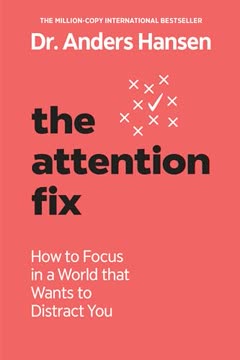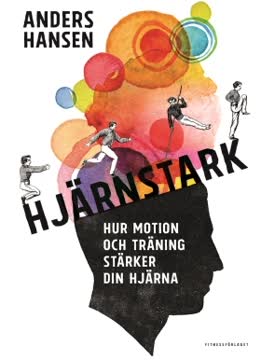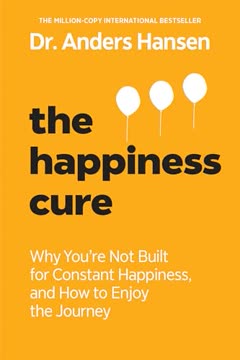Key Takeaways
1. Our Brains Are Mismatched to the Modern World
Biologically, we still have brains that react to each calorie by crying out: Put that in your mouth, tomorrow there might be none left!
Evolutionary baggage. Our brains evolved in a world vastly different from today's, characterized by scarcity, constant movement, and immediate threats. This mismatch leads to problems like overeating, chronic stress, and difficulty concentrating in a world of abundance and constant stimulation. For example, the craving for high-calorie foods, once a survival mechanism, now contributes to obesity and related health issues.
Hunter-gatherer vs. modern life. The book highlights key differences between the hunter-gatherer lifestyle and modern life:
- Small, close-knit communities vs. sprawling cities
- Constant physical activity vs. sedentary lifestyles
- Limited exposure to new faces vs. constant interaction with millions
- High mortality rates vs. increased life expectancy
Consequences of mismatch. These changes have occurred too rapidly for our brains to adapt, leading to a range of problems, including increased rates of obesity, type 2 diabetes, anxiety, and attention deficit disorders. Our brains are essentially "designed" for a world that no longer exists.
2. Feelings Are Evolutionary Survival Strategies
Feelings are not reactions to the world around us but something our brains create as a reaction to what’s happening inside our bodies, combined with what’s happening around us.
Guiding behavior. Feelings are not simply emotions but evolved mechanisms that guide our behavior towards survival and reproduction. They are quick calculations made by the brain based on internal and external cues, designed to prompt immediate action. For instance, hunger motivates us to seek food, while fear prompts us to flee from danger.
Feelings vs. rational thought. In a perfect world, we would have all the information needed to make rational decisions. However, in reality, our brains often rely on feelings to make quick judgments in situations where information is incomplete or time is limited. This is why we might crave sweets even when we know they are unhealthy or feel anxious about a social situation despite knowing there is no real threat.
Negative feelings prioritized. Negative feelings, such as fear and stress, take precedence over positive ones because they are often linked to immediate threats. This prioritization ensures that we respond quickly to danger, even at the expense of other needs. This is why it's hard to think about anything else under intense stress.
3. Stress, Anxiety, and Depression: Ancient Responses to Modern Problems
For 99 per cent of the time of beasts on this planet, stress has been three minutes of terror after which it’s either over with you or with your opponent.
The HPA axis. The hypothalamic-pituitary-adrenal (HPA) axis, our body's stress system, evolved to help us respond to imminent threats. When faced with danger, the HPA axis releases cortisol and adrenaline, preparing us to fight or flee. However, in modern life, this system is often activated by psychosocial stressors, such as deadlines, financial worries, and social media pressures.
Chronic stress. Prolonged exposure to stress hormones can disrupt brain function, leading to a range of physical and mental health problems. This constant state of fight-or-flight can impair sleep, digestion, memory, and immune function. It can also lead to irritability, difficulty concentrating, and a reduced sense of well-being.
Anxiety and depression as protective mechanisms. Anxiety is a reaction to a perceived threat, helping us plan and focus on what's important. Depression, often following prolonged stress, may be the brain's way of protecting us from a dangerous world by encouraging withdrawal and isolation. This is supported by the genetic link between depression and the immune system, suggesting that depression could be a strategy for avoiding infection.
4. Mobile Phones: Hacking the Brain's Reward System
How do we consume as much of your time and conscious attention as possible? We exploited a vulnerability in human psychology. We give you a little dopamine hit.
Dopamine and novelty. Mobile phones are designed to exploit our brain's reward system, particularly our craving for novelty and social connection. Each notification, like, or new piece of information triggers a release of dopamine, making us want to keep checking our phones. This constant stream of rewards can lead to compulsive phone use and addiction.
Uncertainty and social media. The brain loves "maybe," and social media platforms exploit this by withholding digital validation (likes, comments) to maximize anticipation and engagement. This creates a cycle of checking and waiting, driving us to spend more time on these platforms.
Silicon Valley's ambivalence. Even those who created these technologies recognize their addictive potential. Some tech leaders limit their own children's screen time, acknowledging the power these devices have over our attention and behavior. This highlights the need for caution and mindful use.
5. Multitasking and Digital Distractions Impair Focus and Memory
People can’t do [multitasking] very well and when they say they can, they’re deluding themselves.
The myth of multitasking. Despite the common belief that we can do multiple things at once, the brain is actually limited in its ability to focus. What we perceive as multitasking is simply rapid switching between tasks, which reduces efficiency and increases errors. This constant shifting of attention creates "attention residue," where our brains continue to dedicate some bandwidth to the previous task, even when we've moved on.
Working memory and concentration. Multitasking also negatively affects our working memory, the "mental workbench" where we hold information temporarily. Constant distractions overload our working memory, making it difficult to process and retain information. This can lead to poorer learning outcomes and reduced cognitive capacity.
The mere presence of a phone. Even when not in use, the mere presence of a mobile phone can distract us and reduce our cognitive capacity. The brain has to expend mental energy to resist the urge to check the phone, leaving fewer resources available for other tasks. This highlights the importance of creating a distraction-free environment when focus is required.
6. Screens Disrupt Sleep and Mental Health
It is surprising in a way that we don’t suffer more mental illness than we do since we are in such an alien environment.
Cortisol and anxiety. Being separated from our phones can trigger stress and anxiety, as our brains interpret the loss of this constant source of dopamine as a threat. This can lead to increased cortisol levels and a sense of unease.
Blue light and melatonin. The blue light emitted by screens suppresses the production of melatonin, a hormone that regulates sleep. This disruption of our circadian rhythm can make it harder to fall asleep and reduce the quality of our sleep.
Sleep deprivation and mental health. Poor sleep has a wide range of negative effects on our mental and physical health, including impaired concentration, emotional instability, and increased risk of depression and anxiety. Prioritizing sleep and limiting screen time before bed are crucial for maintaining well-being.
7. Social Media Fuels Comparison and Erodes Empathy
Comparison is the thief of joy.
Gossip and social hierarchy. Social media platforms tap into our innate desire to gossip and keep track of others. However, this constant comparison can lead to feelings of inadequacy and envy, particularly among those who are already insecure.
Serotonin and social status. Serotonin, a neurotransmitter associated with well-being, is also linked to our perception of our social status. Constant exposure to curated and often unrealistic portrayals of others' lives on social media can lower our self-esteem and make us feel like we are at the bottom of the pecking order.
Erosion of empathy. Face-to-face interactions are crucial for developing empathy and understanding others' emotions. Replacing real-life social connections with digital communication can impair our ability to read social cues and connect with others on a deeper level. This can lead to a decline in empathy and increased social isolation.
8. Exercise: A Powerful Antidote to Digital-Age Stress
The brain is organized for movement. If we don’t understand that then we are going to miss much.
Improved concentration. Physical activity improves concentration by increasing blood flow to the brain and stimulating the release of neurotransmitters that enhance cognitive function. Even short bursts of exercise can have a significant impact on our ability to focus and resist distractions.
Stress reduction. Exercise helps to regulate the HPA axis, making us more resilient to stress. By mimicking the physical demands of our ancestors' lives, exercise prepares us to cope with modern stressors without triggering the same level of anxiety and panic.
Evolutionary advantage. The stress-reducing effects of exercise are rooted in our evolutionary history. Our ancestors needed to be physically fit to survive, and those who were in good shape were better equipped to handle threats and challenges. This is why exercise continues to be a powerful tool for managing stress and anxiety in the modern world.
9. The Future Brain: Adaptation or Decline?
The silicon chip will transform everything, except everything that matters.
Rising IQ and the Flynn effect. Over the past century, average IQ scores have increased significantly, a phenomenon known as the Flynn effect. This is likely due to increased access to education, more complex jobs, and improved nutrition. However, recent evidence suggests that this trend may be slowing or even reversing in some countries.
The Google effect. As we delegate more tasks to technology, there is a risk that we may lose certain mental functions. The "Google effect" refers to the tendency to remember where to find information rather than the information itself. This can lead to a decline in our ability to think critically and solve problems independently.
The need for balance. The key to navigating the digital age is to find a balance between leveraging technology and maintaining our cognitive health. This involves being mindful of our screen time, prioritizing real-life social connections, and engaging in activities that promote focus, creativity, and critical thinking.
Last updated:
FAQ
1. What is "The Attention Fix" by Anders Hansen about?
- Explores digital distraction: The book examines how our brains, shaped by evolution, are struggling to adapt to the rapid changes brought by digital technology, especially mobile phones and social media.
- Focuses on attention and wellbeing: Hansen investigates why it has become so difficult to concentrate, the mental health consequences of constant digital stimulation, and the science behind our declining focus.
- Evolutionary perspective: The author uses evolutionary biology to explain why our brains are vulnerable to distraction, stress, and anxiety in the modern world.
- Practical advice included: The book offers actionable strategies to reclaim attention, improve mental health, and live better in a digital age.
2. Why should I read "The Attention Fix" by Anders Hansen?
- Understand your own mind: The book provides insight into why you may feel more distracted, anxious, or stressed in today’s digital world.
- Science-backed explanations: Hansen draws on neuroscience, psychology, and evolutionary biology to explain the effects of technology on our brains.
- Actionable solutions: Readers receive practical tips to improve focus, sleep, and wellbeing, making it relevant for anyone seeking balance in a tech-saturated life.
- Timely and relatable: With digital distractions at an all-time high, the book addresses a universal modern challenge with empathy and expertise.
3. What are the key takeaways from "The Attention Fix" by Anders Hansen?
- Brains out of sync: Our brains evolved for a world of scarcity and danger, not for the constant stimulation and abundance of the digital age.
- Digital technology exploits vulnerabilities: Mobile phones and social media are designed to hijack our attention by tapping into our dopamine-driven reward systems.
- Multitasking is a myth: Attempting to do several things at once actually impairs memory, focus, and learning.
- Physical activity is essential: Exercise is a powerful antidote to digital stress, improving concentration, mood, and resilience.
- Practical boundaries help: Setting limits on screen time, especially before bed and in social situations, can significantly improve mental health and cognitive function.
4. How does Anders Hansen explain the impact of digital technology on our brains in "The Attention Fix"?
- Dopamine-driven design: Phones and apps are engineered to trigger dopamine, making them addictive and hard to resist.
- Hijacking attention: The unpredictability of notifications and social media rewards keeps us compulsively checking our devices.
- Impaired memory and focus: Constant digital interruptions reduce our ability to concentrate, remember, and learn new information.
- Stress and anxiety: Overuse of digital devices activates the brain’s stress system, leading to increased anxiety and even depression.
5. What evolutionary concepts does "The Attention Fix" by Anders Hansen use to explain modern distraction?
- Mismatch theory: Our brains are adapted for survival in a world of scarcity, not for today’s information-rich, low-risk environment.
- Smoke detector principle: The amygdala is primed to overreact to potential threats, making us hypervigilant and easily distracted.
- Reward system vulnerabilities: Evolution favored brains that seek novelty and uncertain rewards, which digital technology exploits.
- Slow adaptation: Evolution cannot keep pace with the rapid changes of the digital era, leaving us ill-equipped to handle constant stimulation.
6. What does "The Attention Fix" by Anders Hansen say about multitasking and its effects?
- Multitasking is inefficient: The brain cannot truly focus on more than one task at a time; instead, it rapidly switches, leaving "attention residue."
- Reduced cognitive performance: Frequent multitaskers perform worse on memory and concentration tests, even at tasks they believe they excel at.
- Training for distraction: Regular multitasking makes the brain more sensitive to interruptions, further eroding focus over time.
- Super-multitaskers are rare: Only a tiny percentage of people can handle multiple tasks without performance loss; most of us cannot.
7. How does "The Attention Fix" by Anders Hansen link digital technology to stress, anxiety, and depression?
- Chronic stress activation: Digital devices keep the brain’s stress system (HPA axis) constantly engaged, leading to fatigue and burnout.
- Anxiety from uncertainty: The unpredictability of digital rewards and social feedback triggers anxiety, especially in vulnerable individuals.
- Depression risk: Excessive screen time, especially on social media, is associated with higher rates of depression, particularly among young people.
- Withdrawal symptoms: Being separated from one’s phone can cause measurable increases in stress hormones and anxiety.
8. What does Anders Hansen recommend for improving focus and mental health in the digital age, according to "The Attention Fix"?
- Set boundaries: Limit phone use, especially before bed and during social interactions; use an alarm clock instead of your phone.
- Turn off notifications: Reduce digital interruptions by disabling push notifications and keeping devices out of sight when focusing.
- Prioritize physical activity: Regular exercise boosts concentration, reduces stress, and improves overall brain function.
- Practice digital detox: Take regular breaks from screens to reset your attention and improve wellbeing.
9. How does "The Attention Fix" by Anders Hansen address the effects of digital technology on children and young people?
- Increased vulnerability: Children’s brains, especially their impulse control systems, are not fully developed, making them more susceptible to digital addiction.
- Negative impact on learning: Screens in classrooms and at home impair memory, reading comprehension, and academic performance.
- Sleep disruption: Excessive screen time, especially at night, reduces sleep quality and duration, with significant consequences for health and learning.
- Mental health concerns: Rising rates of anxiety, depression, and loneliness among youth are linked to increased screen and social media use.
10. What role does physical exercise play in "The Attention Fix" by Anders Hansen’s approach to digital wellbeing?
- Exercise as antidote: Physical activity counteracts the negative effects of digital overload, improving focus, mood, and stress resilience.
- Boosts cognitive function: Even short bursts of movement enhance attention, memory, and executive function in both children and adults.
- Reduces anxiety and depression: Regular exercise lowers baseline anxiety and acts as a buffer against stress-induced mental health issues.
- Evolutionary fit: Our brains are designed to function optimally when we move; sedentary digital lifestyles undermine this natural advantage.
11. What are the most important practical tips from "The Attention Fix" by Anders Hansen for managing digital distractions?
- Track your usage: Use built-in tools to monitor and become aware of your screen time.
- Create phone-free zones: Keep devices out of bedrooms, classrooms, and social gatherings to foster better sleep and relationships.
- Schedule screen breaks: Designate specific times for checking messages and emails, rather than responding instantly.
- Model healthy habits: Parents and adults should set an example for children by managing their own digital behaviors.
12. What are the best quotes from "The Attention Fix" by Anders Hansen and what do they mean?
- "The most important relic of early humans is the modern mind." – Emphasizes that our brains are shaped by ancient environments, not the digital world.
- "We are constantly preparing ourselves for a famine that never comes." – Illustrates how evolutionary drives (like calorie cravings) are mismatched with modern abundance.
- "People can’t do [multitasking] very well and when they say they can, they’re deluding themselves." (Earl Miller, quoted) – Highlights the myth of multitasking and its cognitive costs.
- "The most valuable thing today is not money, Bitcoin or even gold – it’s your attention." – Underlines the central thesis that our attention is a commodity being exploited by technology companies.
- "Technology should adapt to us, not the other way around." – Advocates for designing digital tools that respect human biology and wellbeing, rather than exploiting our vulnerabilities.
Review Summary
The Attention Fix receives mixed reviews, with an average rating of 3.91/5. Readers appreciate Hansen's accessible explanation of how technology impacts attention spans and mental health. Many find the book informative and thought-provoking, praising its insights on brain evolution and practical tips for reducing screen time. However, some criticize it for being repetitive and lacking in-depth solutions. The book's brevity is both praised and criticized. Overall, readers find it a quick, relevant read that offers valuable perspectives on modern attention challenges, particularly regarding smartphone usage and its effects on focus.
Similar Books

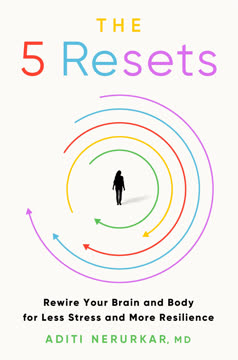


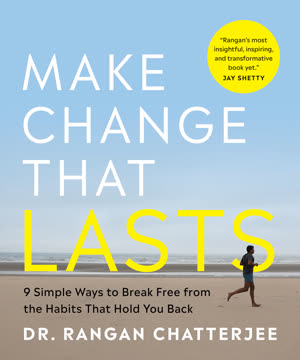

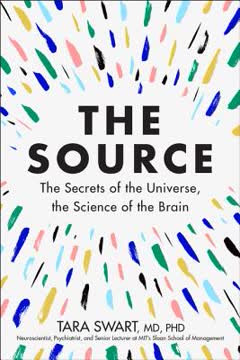
Download PDF
Download EPUB
.epub digital book format is ideal for reading ebooks on phones, tablets, and e-readers.
